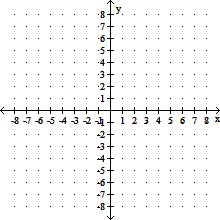Answer the question or solve the problem.If a < b, is it always true that  >
>  ? Explain.
? Explain.
What will be an ideal response?
No. The second statement only follows from the first if a and b are either both positive or both negative. Divide both sides of the original inequality by (ab). If a and b are of opposite signs, then (ab) < 0. When dividing by a negative number, the inequality sign must be reversed (thus,  >
>  , and
, and  >
>  ).In addition, if a (or b) is zero, then its reciprocal is undefined. (Explanations will vary. )
).In addition, if a (or b) is zero, then its reciprocal is undefined. (Explanations will vary. )
You might also like to view...
Solve the problem.A hot dog stand sells hot dogs with cheese, relish, chili, tomato, onion, mustard, or ketchup. How many different hot dogs can be concocted using any 4 of the extras?
A. 210 B. 840 C. 420 D. 35
Solve graphically. 3x + 2y = 5-6x - 4y = 5
A. (-1.5, -1) B. (1.5, -1) C. (1, 1) D. No solution
Solve.Martha can rake the leaves in her yard in 5 hours. Her younger brother can do the job in 6 hours. How long will it take them to do the job if they work together?
A. 2 hr
hr
B.  hr
hr
C. 6 hr
D. 30 hr
Specify the coordinates of the vertices and foci and find the equations of the asymptotes of the given hyperbola.36y2 - 9x2 = 324
A. Vertices: (±6,0); foci: (±3 , 0); asymptotes: y = ±
, 0); asymptotes: y = ± x
x
B. Vertices: (±3, 0); foci: (±6, 0); asymptotes: y = ± x
x
C. Vertices: (0, ±3); foci: (0, ±3 ); asymptotes: y = ±
); asymptotes: y = ± x
x
D. Vertices: (0, ±3); foci: (±3 , 0); asymptotes: y = ±
, 0); asymptotes: y = ± x
x